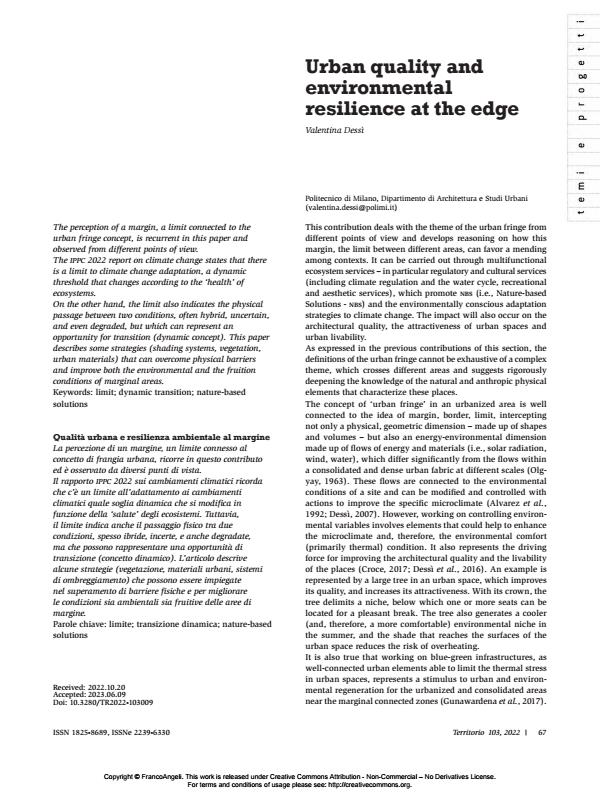Urban quality and environmental resilience at the edge
Journal title TERRITORIO
Author/s Valentina Dessì
Publishing Year 2023 Issue 2022/103
Language English Pages 5 P. 67-71 File size 173 KB
DOI 10.3280/TR2023-103009
DOI is like a bar code for intellectual property: to have more infomation
click here
Below, you can see the article first page
If you want to buy this article in PDF format, you can do it, following the instructions to buy download credits

FrancoAngeli is member of Publishers International Linking Association, Inc (PILA), a not-for-profit association which run the CrossRef service enabling links to and from online scholarly content.
The perception of a margin, a limit connected to the urban fringe concept, is recurrent in this paper and observed from different points of view. The ippc 2022 report on climate change states that there is a limit to climate change adaptation, a dynamic threshold that changes according to the ‘health’ of ecosystems. On the other hand, the limit also indicates the physical passage between two conditions, often hybrid, uncertain, and even degraded, but which can represent an opportunity for transition (dynamic concept). This paper describes some strategies (shading systems, vegetation, urban materials) that can overcome physical barriers and improve both the environmental and the fruition conditions of marginal areas.
Keywords: limit; dynamic transition; nature-based solutions
Valentina Dessì, Urban quality and environmental resilience at the edge in "TERRITORIO" 103/2022, pp 67-71, DOI: 10.3280/TR2023-103009